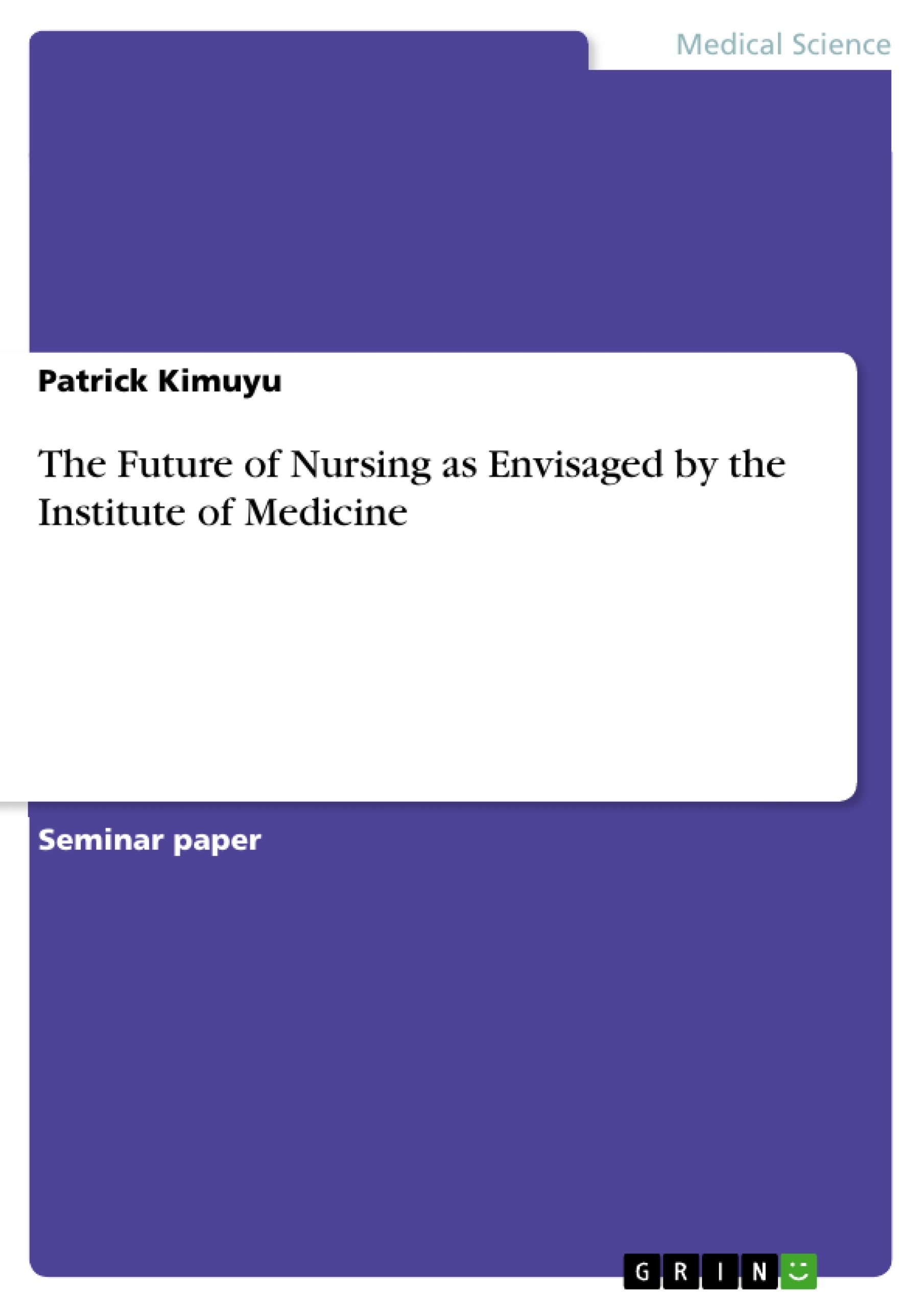In the recent years, nursing education and practice appear to have been influenced by the current healthcare reforms. The Affordable Care Act has introduced cross-sectional changes in the US healthcare system. For instance, it has led to an increase in the number of uninsured people by introducing universal healthcare under the reviewed health insurance plans. It is predicted that “expanding the reach of insurance coverage will place greater demands on the primary care system, as witnessed in Massachusetts” (IOM, 2010a). Consequently, the scope of healthcare services has experienced immense changes ranging from patient’s privacy protection as it is defined by HIPAA to the treatment of degenerative diseases. IOM observes “primary care medical homes and accountable care organizations (ACOs)—rely on interventions that fall squarely within the scope of practice of RNs (e.g., care coordination, transitional care)” (p.375). Owing to these changes in the US healthcare system, transient reforms in the nursing profession are deemed necessary for addressing the vast needs of the US population, and this explains the importance of the 2010 Institute of Medicine’s recommendations. Evidence indicates that, the nursing profession plays the pivotal role in the healthcare system because it accounts for the largest percentage of the healthcare workforce. As such, introducing transformations in the nursing profession appear to be as significant as the Affordable Care Act, especially regarding the improvement of healthcare service delivery. Therefore, this research paper will provide a comprehensive overview on the impact of IOM recommendations on the nursing profession including the key messages.
Contents
Introduction
Key Messages
Key Message #1
Key Message #2
Key Message #3
Key Message #4
Recommendations
Recommendation #1
Recommendation #2
Recommendation #3
Recommendation #4
Recommendation #5
Recommendation #6
Recommendation #7
Recommendation #8
Conclusion
References



